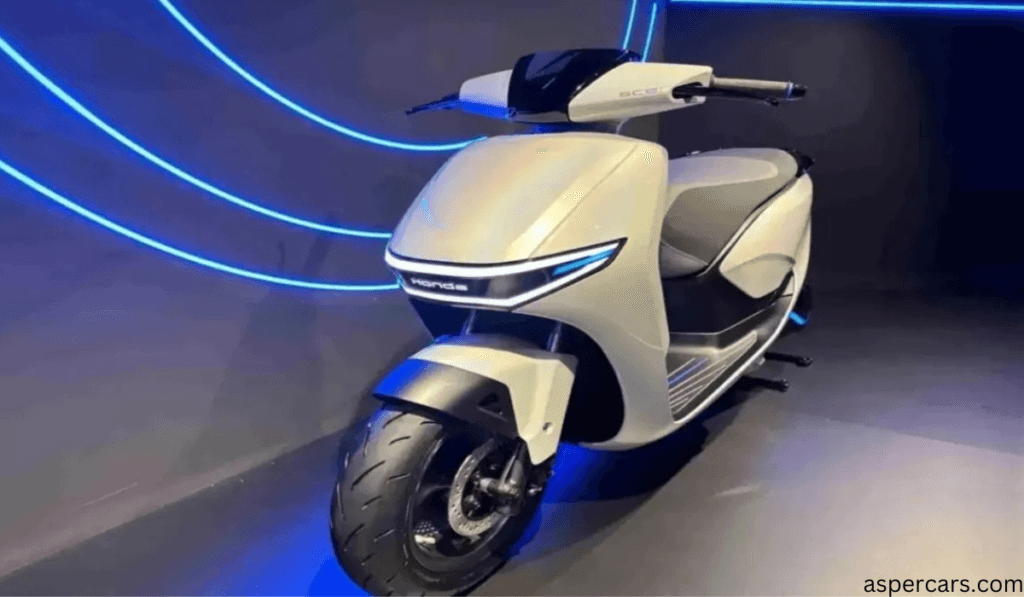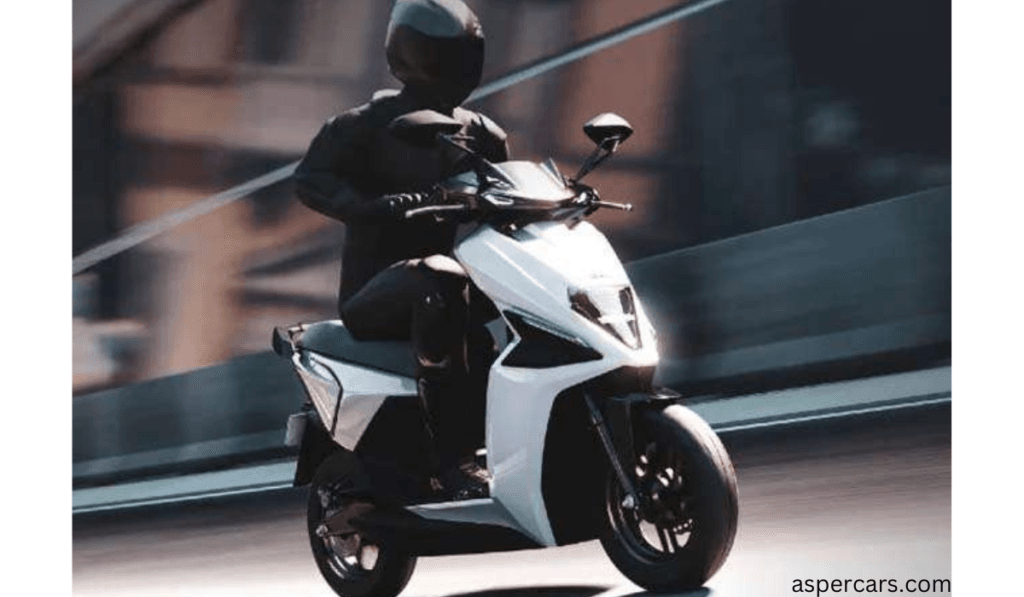Introduction
Recently Tata Motors ventured in the electric scooter segment they have launched scooter that has a largest range of 600 km. This new formation is slated to revolutionize the EV market by eradicating the problem of range and providing people not only with a powerful yet efficient and environmentally friendly commuting solution. Tata’s new-age battery and superior features, with its new invention it is targeting to challenge Ola Electric, Ather and Bajaj Chetak.

key features: ☺.
| Feature | Details |
|---|---|
| Longest Range in Segment | A 600 km single-charge range is a major breakthrough. |
| Fast Charging Technology | Capable of rapid charging to minimize downtime. |
| Powerful Battery and Motor | A high-capacity lithium-ion battery and an efficient motor. |
| Smart Features | AI-driven systems, digital dashboard, and smartphone connectivity. |
| Eco-Friendly Build | Designed using sustainable materials with a focus on efficiency. |
| Competitive Pricing | Strategically positioned to attract a wide range of consumers. |
Specific Innovation: The longest claim to fame must go to the Parrot AS weathers the 600 km single charge range.
Fast Charging Technology: This one will enable the quick charging process to ensure that the device is not out of charge for so long.
Powerful Battery and Motor: A high-capacity lithium-ion battery and an efficient motor for optimal performance.
Smart Features: Equipped with AI-driven systems, digital dashboard, and smartphone connectivity.
Environmentally friendly Value: Construction of the building was done sustainably taking into account its energy consumption.
Competitive Prices Strategy: Our prices strategy aims at reaching the consumer market segment and attracting its attention.

Design and Build Quality
The product that has been developed by Tata is definitely in sync with the future languages of aesthetics as well as aerodynamics. The scooter features:
Lightweight yet Durable Frame: Ensuring stability and longevity.
LED Lighting System: High intensity headlights, rear lights, and signaling lights.
Extra Storages: Ample of space under the seats to store non essentional items.
This ergonomically designed seats are ideal for long journeys do not pose discomfort to the travelers.
Battery and Performance
The unique selling proposition of this scooter has been cited to be the new generation long battery life which can take up to 600 Km. It utilizes a very advanced lithium-ion battery pack that can provide the following benefits:
Extended Lifecycle: Designed for long-term usage with minimal degradation.
Fast Charging: It is fully charge in one point eight Hrs using a fast-charging station.
Regenerative Braking System: It also increases more energy because the braking energy is converted into power.
High Torque Motor: Delivers seamless acceleration and optimal top speed.
Smart and Safety Features
Keeping in mind the safety and convenience there are several notable features integrated in this electric scooter from Tata.
Real-Time Battery Information and Status Display: This uses artificial intelligence to display the status and geographical directions of the battery required to complete the project.
Geofence and Anti-theft feature: Integrate the mobile application with better security features for tracking the thief.
ABS (Anti-lock Braking System): This system help to controls the movements of wheels and to improve the braking capacity of the car.
Multiple Riding Modes: Eco, Normal, and Sport modes for customized riding experience.
Self-Denter Mode: Helps in controlling the speed of the car and ease the parking process.
Charging Infrastructure and Support
Charging infrastructure is urgently being developed by Tata Motors to cater to different major city to accommodate its electric vehicles. There are various methods that the users can use to power the scooter which include:
Home Charging Stations: Wall-mounted chargers for convenient overnight charging.
Public Fast-Charging Network: A growing network of high-speed chargers for quick top-ups.
Near Future Features: Car manufacturers and electric car companies to incorporate the technology which will enable consumers to swap batteries.
Competitive Edge Over Rivals
This particular electric scooter establishes Tata as a competitor in the two-wheeler EV market dominated by leading brands. It stands out due to:
Advantage No. 2: Maximum travelling per charge is 600 km, thereby surpassing competitors that allow def 150-200 km.
Strong Structure: It is specifically built to suit the Indian road infrastructure and conditions.
Advanced Tech Features: AI-based dashboard and smartphone connectivity.
On the aspect of prices, the iPhone under this strategy was expected to be Sims having a premium price despite enhancing features.
Expected Price and Availability
That is why Tata Motors strive to make the models affordable, and at the same time trying to provide the consumer with all the features of a high-end product. He further revealed that automobile experts have set the price range anywhere between ₹1.2 lakh to ₹1.5 lakh to help attract potential target customer groups, primarily the urban and inter-city commuters. Launch seems to be planned for the next months concerning pre-bookings while sales will start in some metropolitan areas before extending to other secondary markets of the country.
| Feature | Details |
|---|---|
| Price Range | ₹1.2 – ₹1.5 lakh |
| Pre-Bookings | Expected to open soon |
| Delivery Start | Initial rollout in metropolitan cities |
| Expansion | Gradual availability in tier-2 and tier-3 cities |
Environmental and Economic Impact
The release of this electric scooter is timely, which is consistent with the country’s effort towards electric mobility. Its impact includes:
Zero emissions from the tailpipe are one of the ways to reduce the emission of carbon and thus making the air we breathe cleaner.
Lower Running Costs: Compared to petrol-based scooters, EVs offer significant savings on fuel.
Government Incentives: It is also qualify for subsidies under FAME II scheme, which will lower its cost.
Advantages of the adopted strategy: Promotion of more consumers to shift from conventional vehicles that use fuel.
Challenges and Future Prospects
Nevertheless, Tata Motors has some issues in relation to its new electric scooter:
Charging Infrastructure Development: Extending Charging Network Infrastructure: The charging point of EVs should extend to semi-urban as well as rural regions.
Battery Recycling and Sustainability: The main focus is to discuss about the disposal of battery.
Essentially, the analysis of consumer motivation for change from using ICE scooters involves addressing fear as a barrier to change in behavioural intention.
These challenges are likely to be addressed by Tata Motors through collaboration with governmental and private entities on the development of the charging stations, battery recycling, and public awareness on EVs.
Conclusion
It is remarkable that Tata has now entered the electric scooter market with a scooter that can run up to 600 km on a single charge. It is therefore safe to argue that this scooter offers an unprecedented advantage in the EV marketplace due its battery capacity, innovation, and cost. This could have a revolutionary role in changing the Indian automobile market as the demand for electric two-wheelers is continuously increasing and Tata’s strategy would help in making the EVs available to the public.